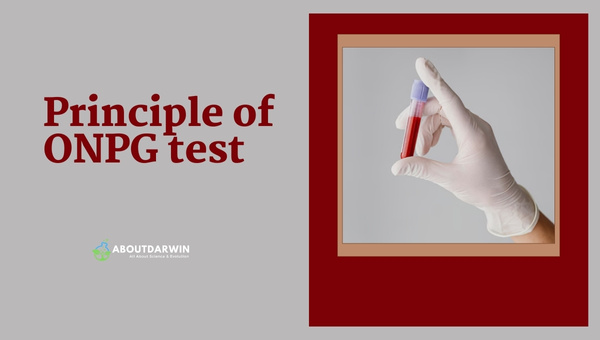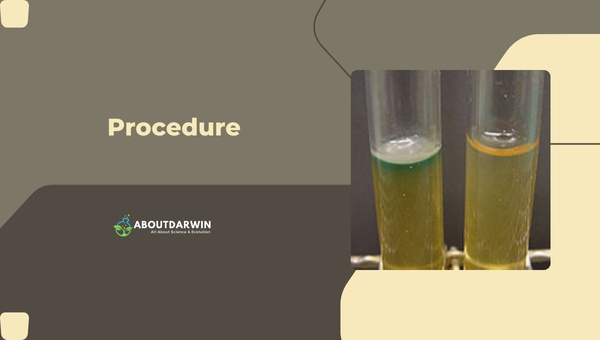Physical Address
304 North Cardinal St.
Dorchester Center, MA 02124
When we talk about the critical tests in bacterial physiology and genetic research, it’s hard to overlook the ONPG Test. This scientific method provides important data on a variety of biological matters, serving an integral role in both diagnostics and research.
Understanding the ONPG Test can seem nearly impossible if you’re new to the field. But fear not, as I am going to dive into each detail – from principle and procedure to uses and interpretations – thereby offering a holistic view of the subject. Join me as we journey through this captivating world of molecular testing.
Contents
The core principle of the ONPG (o-nitrophenyl-b-D-galactopyranoside) test lies in its ability to identify the presence or absence of specific lac genes, important figures in bacterial genetics. This is achieved by using ONPG, a colorless compound that mimics lactose within a bacterial environment.

When you conduct an ONPG test, and there is Beta-galactosidase present, this indicates an active lac gene, which cleaves ONPG into galactose and o-nitrophenol. The latter element presents as a yellow color, yielding visible, tangible proof of lac gene activity.
Also Read: Unveiling MacConkey Agar: Composition, Principles, and Uses
To start with the ONPG test, you will require a few essentials such as sterilized test tubes or plates, phosphate buffer solution of pH 7, ONPG solution, lactose broth, and your bacteria sample.

Now, let’s explore the procedure that is usually followed:
Remember always to maintain a sterile environment while performing the test, along with wearing appropriate lab attire for personal safety.
As a diagnostic tool, the ONPG Test is quite important, especially when physicians are attempting to discern particular infecting microorganisms. It narrows down the identity of an unknown bacterium. The presence or absence of the Lac operon (determinable through this test) gives clues about which bacteria could be responsible for the disseminated infection, as the ability to utilize lactose differentiates certain pathogenic bacteria from others.
On another front, research scientists find value in utilizing the ONPG Test as part of their larger work. It finds use in genetic engineering and biotechnology industry for understanding bacterial genetics and in manipulating them for beneficial purposes. For example, it plays a significant role in studying mutation rates within populations, helping scientists gain insights into many biological queries about the adaptability and survival strategies of microbes.
Also Read: Exploring Differences: Gram Positive vs Gram Negative Bacteria
ONPG Test results are simple to interpret. Under normal circumstances, a positive impact from the ONPG Test is indicated by a yellow color change in the solution. This suggests the presence of Beta-galactosidase, which further shows that the lac operon is fully functional in that particular bacterium.
| Color Change | Interpretation |
|---|---|
| Yellow | This signifies a positive test result, indicating that the bacterium has an active Lac operon and can hydrolyze lactose. |
| No change | A negative test result signifies the inability of bacteria to utilize lactose due to the absence or mutation in necessary genes that are crucial for lactose metabolism. |
So, depending on color changes observed after the incubation period, one can interpret if a specific bacteria has desired genes or if its lac operon is functioning appropriately.
Also Read: How Do Family Trees Work? Unraveling The Intricacies
ortho-Nitrophenyl-β-galactoside
O-nitrophenyl ß-galactoside (ONPG) is another lactose analog. It can be used to measure the enzyme activity of ß-galactosidase quantitatively.
“ONPG” (also known as “2-Nitrophenyl β-D-galactopyranoside”) is a Chemical analog of the sugar lactose and is hydrolyzed by the enzyme lactase.
If there’s a yellow color change in your solution after the incubation period, this indicates a positive impact, showing the presence of necessary functioning genes.
An active lac operon allows bacteria to utilize lactose as their main source of energy. This capability helps them adapt to environments where other energy sources may be scarce.
Also Read: Sanborn Fire Insurance Maps: A Comprehensive Guide
As we wrap up this guide on the ONPG Test, it’s clear that this method is an integral part of bacterial diagnoses and research. This simple yet highly effective test provides valuable insights into the genetic functioning- lac operon of bacteria by reflecting their ability to utilize lactose.
To sum up, remember that a positive result shows in yellow, suggesting the presence of crucial genes in the bacterium, while the absence of color change indicates the contrary. Understanding these parameters assists in interpreting the ONPG Test efficiently. So, whether you’re a budding researcher or just a curious learner, I hope this dive into the world of molecular testing has been enlightening for you!